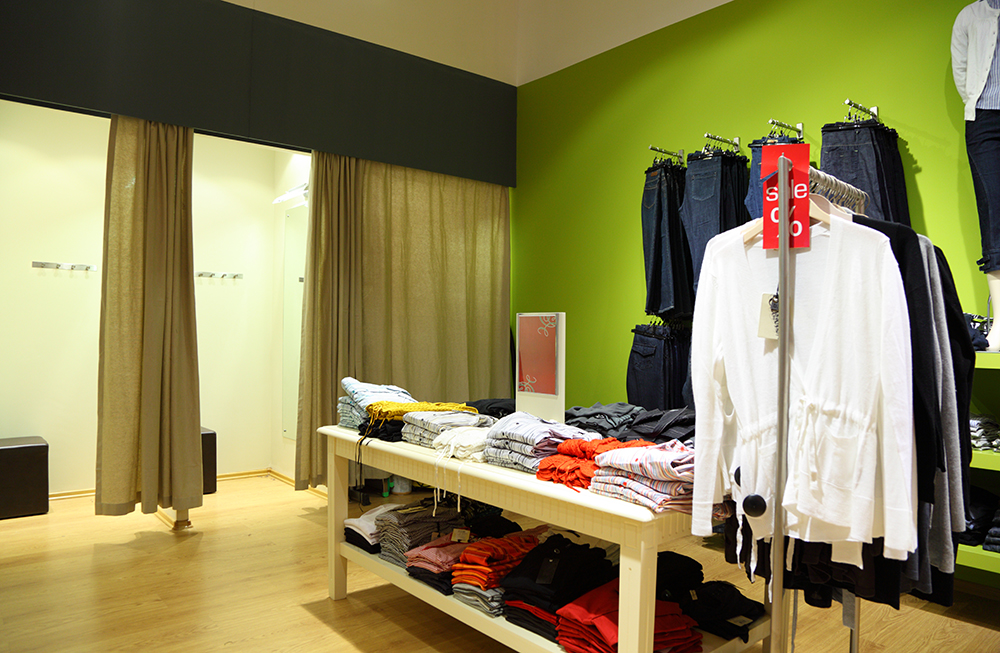Technology targets fitting room theft

As any retailer with a focus on attire will attest, the fitting room presents a real opportunity for would-be thieves to conceal and steal retail items.
Even stores with the most attentive customer service, the best fitting room design, and clearest fitting room policies, struggle with theft in this location.
The good news is, technology can play a pivotal role in reducing, if not eliminating theft in change rooms, and here’s a couple of ways that works…
The problem
It’s hard to gain a statistical grasp on the amount of theft that occurs in change rooms, but most retailers are reporting significant levels in these areas.
The challenge with the fitting room is it’s a place that’s out of sight, private and often sees other items like bags enter as people go in to try on clothes.
This offers a wealth of opportunity for common shoplifting techniques like detaching security tags using magnets, concealing items beneath clothing or “boosting” items in specially designed shoplifting bags.
In fact, one of the most common comments we hear from retailers about fitting room security, is that detached security tags are found concealed behind change room fixtures and fittings like mirrors or benches.
This means while in the change room, a shopper has actively removed the security device used to prevent a theft. They’ve done so in the knowledge there’s no CCTV and no staff member can see them. Chances are they’ve used a device like a magnetic detacher to assist.
Only long after an item has left a store do retailers realise this theft has occurred, and when it comes to apparel, odds are the item taken wasn’t cheap.
The answer lies in improved security and there are some excellent new products available on the market to assist.
Fitting Room Guard
Designed specifically to address the issue of change room theft, FittingRoom Guard detects the tools that shoplifters use to detach security tags.
The product sees antennae placed in the fitting room area and the Fitting Room Guard then detects magnetic movement when a shoplifter removes a tag with a detacher.
Staff are alerted to the incident via a pager, or an optional alarm in the fitting room can sound to deter the would-be thief from proceeding with the crime.
The software behind FittingRoom Guard allows it to be tuned to detect all types of magnetic detachers used in both RF and AM systems, as well as scalable to cover multiple change rooms.
Fitting Room Guard is part of the MetalGuard/Foil Bag Detection product range and is one of the most effective strategies for actively addressing theft in change rooms. Coupled with improved tag security it can potentially see change room theft a problem of the past.
Improved tag security
While the FittingRoom Guard tackles tag removal, retailers can also employ the use of high-quality tags that make it harder, if not impossible, for a tag to be illicitly removed without destroying an item.
Tags generally rely on magnets to secure them, but some magnets are better than others and the available strength has increased over the years to combat tag removal. Meanwhile, some tag designs are also more impervious to tampering, and pin head size also plays a role.
So here are some tag tips to consider…
Magnet and locking mechanism strength
Security tags are available in a variety of different magnet strengths including multipolar, hyperlock and superlock.
Multipolar tags offer the most effective security against tampering, because their unique locking system is impervious to common magnet detachers and too strong to be physically pried apart with a hook.
As a benefit, multipolar tags, which are available as part of our Z50 range, feature a clam shell design and this too offers additional security against detaching.
As a minimum, superlock strength tags should be considered, with anything above that offering increased security.
Design
The size and shape of tags varies, with some more prone to being pried open than others. Tags with less surface area for the shoplifter to get leverage provide the best security, making the clam shell design the one that offers the best resistance.
Pin size
All clothing tags comprise two elements, the pin component that passes through the garment, and the locking mechanism EAS tag that houses and secures the pin using a magnet or mechanical mechanism.
If the pinhead is too small the shoplifter may seize the opportunity to push the pin head through the garment or cut a small hole to remove the tag. That means a larger pin head offers improved security.
Ink dye
Known as a benefit denial strategy, security tags that contain ink in them work to deter tag removal.
When a tag is tampered with, ink releases into the fashion item. It’s an obvious deterrent to would-be thieves, and should they persist with attempted removal, it renders the item almost useless.
The fitting room might present unique challenges for combatting retail theft, but in no way are they insurmountable. Effective loss prevention in change rooms comes down to staff training, fitting room design, a strict change room policy and a host of available technology that can assist.